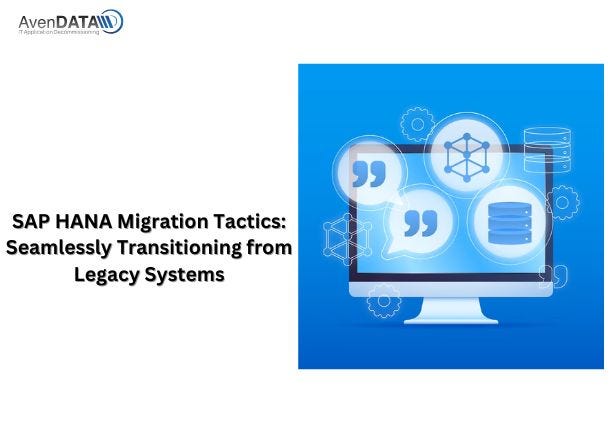SAP HANA Migration Tactics: Seamlessly Transitioning from Legacy Systems

In the ever-evolving landscape of enterprise technology, migration to SAP HANA has emerged as a pivotal strategy for businesses looking to enhance performance, scalability, and agility. SAP HANA, with its in-memory computing capabilities, offers a robust platform for processing vast volumes of data in real-time, enabling organizations to gain actionable insights and drive innovation. However, migrating from legacy systems to SAP HANA requires careful planning, execution, and optimization to ensure a smooth transition and maximize the benefits of the new environment.
Understanding the Migration Landscape
Before embarking on the journey of SAP HANA migration, organizations need to assess their existing IT landscape comprehensively. This involves evaluating the current infrastructure, applications, and data architecture to identify dependencies, compatibility issues, and potential challenges. Conducting a thorough analysis helps in developing a clear migration strategy tailored to the organization’s specific needs and objectives.
Defining the Migration Approach
One of the critical aspects of SAP HANA migration is choosing the right approach based on the organization’s goals, resources, and timeline. Organizations can opt for various migration methods, including:
- Greenfield Migration: Involves building a new SAP HANA environment from scratch, offering a clean slate for implementation but requiring significant time and resources.
- Brownfield Migration: Involves converting existing systems to SAP HANA, allowing for a faster migration process but requiring careful consideration of compatibility and data migration challenges.
- Hybrid Migration: Combines elements of both greenfield and brownfield approaches, providing flexibility and mitigating risks associated with each method.
Addressing Technical Challenges
SAP HANA migration entails several technical challenges that organizations must address effectively to ensure a successful transition:
- Data Migration: Moving data from legacy systems to SAP HANA while maintaining integrity, consistency, and security is a complex task. Organizations need robust data migration tools and methodologies to streamline the process and minimize disruptions.
- Application Compatibility: Ensuring that existing applications are compatible with SAP HANA and optimizing them for the new environment is essential. This may involve code refactoring, performance tuning, and testing to maximize performance and reliability.
- Infrastructure Optimization: Deploying SAP HANA requires suitable hardware infrastructure capable of supporting its demanding workload requirements. Organizations need to assess their infrastructure needs and invest in scalable, high-performance hardware to ensure optimal SAP HANA performance.
Leveraging Expertise and Resources
Given the intricacies involved in SAP HANA migration, organizations can benefit significantly from leveraging external expertise and resources. Collaborating with experienced SAP consultants, system integrators, and technology partners can provide valuable insights, best practices, and support throughout the migration journey. Additionally, investing in employee training and skill development ensures that internal teams are equipped to manage and maintain the SAP HANA environment effectively post-migration.
Continuous Optimization and Innovation
SAP HANA migration is not merely a one-time event but an ongoing process of optimization and innovation. Organizations need to establish mechanisms for monitoring performance, identifying areas for improvement, and implementing enhancements to maximize the value of their SAP HANA investment continuously. By embracing a culture of continuous improvement and innovation, organizations can stay ahead of evolving business requirements and leverage SAP HANA’s full potential to drive growth, innovation, and competitive advantage.
In conclusion, SAP HANA migration presents a transformative opportunity for organizations to modernize their IT infrastructure, unlock new capabilities, and drive digital transformation. By adopting a strategic approach, addressing technical challenges, leveraging expertise, and embracing a culture of innovation, organizations can seamlessly transition from legacy systems to SAP HANA and position themselves for success in the digital age.
